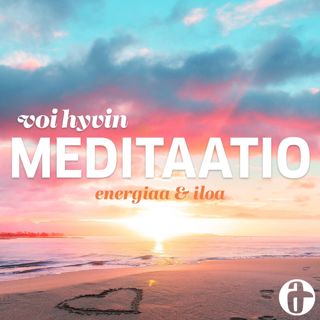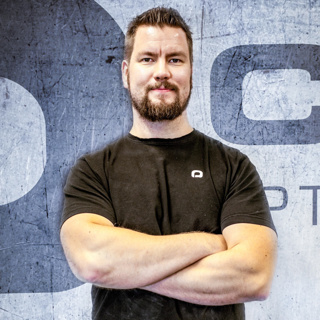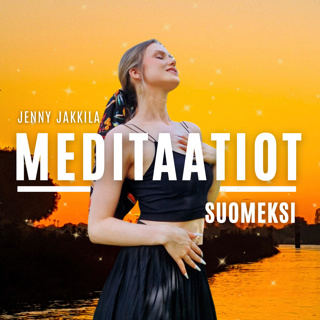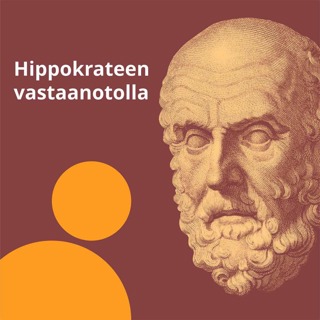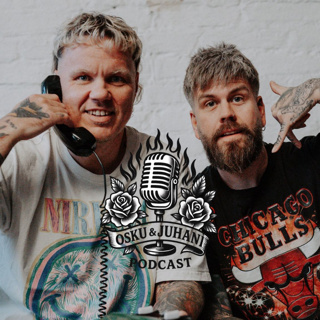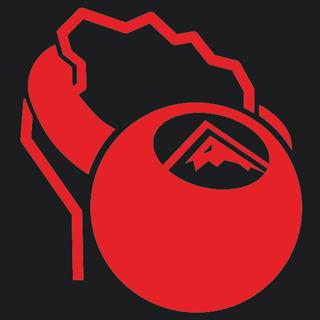
Mountain Bike Training without a power meter
This is for everyone whose bike get's a bit dusty over the winter. You are a multi-sport athlete doing some type of snow sport in the winter. With a couple of races coming up this summer how should you train? If you aren't into power meters and are more into vibes and having fun on your rides, check this out! 🎙️ Episode: Training Without a Power Meter 🚵♂️ A conversation for mountain bikers who want to train smarter, ride stronger, and still keep it fun. Perfect for weekend warriors, endurance racers, and anyone balancing riding with winter sports in the American West. 👇 Chapters: 0:00 – Intro: Meet the coaches and riders 0:44 – Sarah's racing background and intro 1:15 – Jay's fitness goals and training experience 2:34 – Who this conversation is for (ages 35–55, multi-sport athletes) 3:42 – The purpose of training vs. exercise 4:28 – Recovery is when the gains happen 6:14 – Jay's real-world take on fitness and events 8:00 – Weekly training structure (2 intensity, 2 endurance) 10:34 – How the gym supports the bike 11:33 – Off-season training: tissue health and hypertrophy 13:00 – Why you lose tissue during the season 14:50 – Getting back on the bike: build slowly 15:53 – Cadence tips: 80–100 RPM for efficiency 17:05 – Ride volume varies—don't overdo it early 18:40 – Most common mistake: too much, too soon 19:19 – See a bike fitter to avoid injury 20:00 – Pre-season/base training phase starts 21:52 – Shift to strength and power in the gym 23:49 – How to progress volume/intensity smartly 24:17 – When and how to take a recovery week 26:16 – Warm-ups and grip strength as recovery tools 27:23 – Dynamometer: a $25 way to avoid overtraining 28:21 – The truth about Zone 2 and fatigue 30:00 – Two full rest days per week: yes, seriously 30:46 – Ride by feel, not just heart rate 32:27 – Transition from base to build phase 33:46 – Starting intervals: long and sub-threshold 35:17 – VO2 max work: why and how to do it 38:00 – Interval recovery and contrast training mistakes 40:00 – Recovery day rides (less than 60 min) 41:00 – Gym during season: lift heavy, low volume 44:00 – Specific prep: over-unders and sharpening 45:26 – Tapering: reduce volume, not intensity 46:03 – You won't lose fitness in a week—rest matters 47:09 – Rule of Thirds: not every workout should feel good 49:00 – When to pull the plug and why it saves your season 50:20 – Final recap and where to get coaching help 🎯 Coaching & Programs 👉 Mountain bike training, gym support, and race prep plans at 100yearathlete.com 👉 Custom plans and Point to Point coaching from Sarah at KS Coaching @ https://kcyclingcoaching.com Shout out to Jay Burke for getting us all in the same room!
13 Touko 54min

Gregory Jusdanis - 100 Year Athlete Interview
I had the opportunity to spend Father's Day weekend with a great friend in town, Gregory. Gregory is a professor at THE Ohio State University and we have been friends since I was a young lad personal training my way through school. He has a cool story with fitness and athletics. He found exercise while studying for PhD. It helped his brain work better essentially. Check out our conversation and let me know what you think!
16 Heinä 202428min

Youth Strength Training - Should We?
The short answer is yes. Listen to the conversation with Dr. Alex Wetmore for more nuance and details.
21 Touko 20249min

Pillar 2 and 3 - Speed / Power
In this episode, Ben Van Treese and Dr. Wetmore dive into the 2nd and 3rd Pillars of the Nine Pillars of Fitness: Speed and Power. They discuss the importance of these elements in maintaining overall fitness, particularly as we age. The conversation highlights why speed and power are critical for both athletic performance and longevity. Key Points: Importance of Speed and Power: --> Speed and power are essential for performing athletic activities and having fun in dynamic environments. Decline with Age: [2:24] -->Strength decline starts in the 40s, but speed and power decline at four times the rate of strength. Comprehensive Fitness: [5:09} --> Athletes need a well-rounded fitness regimen that includes speed and power to prevent imbalances and improve overall functionality. Training Recommendations: [8:34] For recreational athletes, training speed and power 2-4 times a week is beneficial. Start with three to five fast or bouncy exercises. Perform three to five reps and three to five sets without getting overly tired. Combine speed and power exercises for simplicity and effectiveness. Quotes: "Speed and power are the basis of all athleticism. Anything you do that is athletic requires speed and power." "If you're going to start training speed and you're an adult that hasn't sprinted for a while, don't let it open up for at least eight weeks, you'll pull a hamstring." Conclusion: [11:01] Incorporate speed and power into your training regimen to maintain athleticism and reduce injury risk, especially as you age. Consistency in training and a balanced approach are key to long-term fitness and health.
10 Touko 202412min

Jay Burke - 100 Year Athlete
What's Your Excuse? At age 56, mountain biker and skier Jay Burke, "pain master" behind the Park City Point 2 Point MTB race, is sending harder than most 20-somethings Listen to the podcast for a contagious dose of Jay Burke – it'll get your ass into the gym or out harnessing gravity. Some highlights include: The origin story (00:00-02:04): Jay's athletic beginnings, from hurdling sawhorses to team roping to motorcycling in rural Idaho. From the ad biz to Jackson, Wyoming (10:20): One summer turned into three years Balancing parenthood, racing, and play (12:31): "Competition is crack" The PMA Shit (20:15): Don't underestimate a positive mental attitude. A blown ACL (22:09): "I'm not gonna let this define my future."
3 Huhti 202433min

1. Movement Skill / Mobility - 9 Pillars of Fitness
Movement Skill / Mobility: What it is: The ability of your joints to move in ways required by your sport. Why it matters: If you lack mobility, you'll make compromises in technique that lead to pain, injury, or poor performance. Blind spots: Being "fit" doesn't matter if you blow your ACL on day #2 of skiing in November due to a lack of knee and hip mobility. Because mobility training doesn't involve sweat and endorphin highs, mountain athletes tend to overlook it. No matter your age or injury history, you can make improvements in mobility, and doing so will extend your years in the mountains.
14 Maalis 202414min

9 Pillars of Fitness - Overview
Check out the blog Learn why the 9 Pillars of Fitness matter and how to use them. Athleticism is longevity. The 9 Pillars of Fitness ensure you maintain your athleticism for a lifetime.
8 Maalis 202410min

Strength Training Increases Your Longevity. "Toning" Doesn't. Roar Chapter 7
Ladies, are you hoping to get more muscle "tone"? Well for f**k's sake, don't. Lifting tiny little weights for high reps won't do diddly-squat for your fitness or longevity. "Toning" is BS. If you want to travel the world, play sports, and adventure in the mountains into your last decade of life, you need to strength train. What exactly does that mean? How is it different from toning? To find out, listen to this week's 100 Year Athlete pod, where Alex and Ben talk through Chapter 7 of Roar by Stacy Sims. Quotes: "In order to have a good quality of life, physically, you have to train hard. You have to strength train. Cardio will not cut it." -Ben "Don't skimp on the loads." -Alex "We're training to make your body last a long time, so you can do cool shit until you're dead." -Ben "I think [with] sprint interval training, an added benefit outside of the physiology is that you teach people how hard they really can work in that short interval." -Alex "Sweat is not a measure of a good workout." -Alex "There's no point in trying to replicate what you already do out on the trails in the gym. We're trying to work on a totally different quality." -Alex
13 Helmi 202423min





